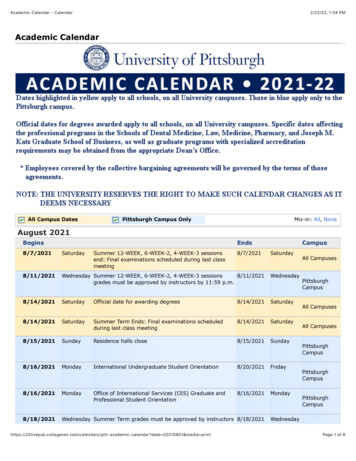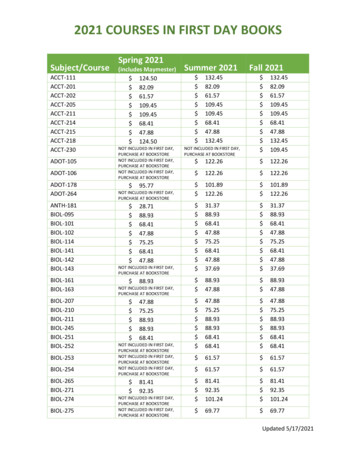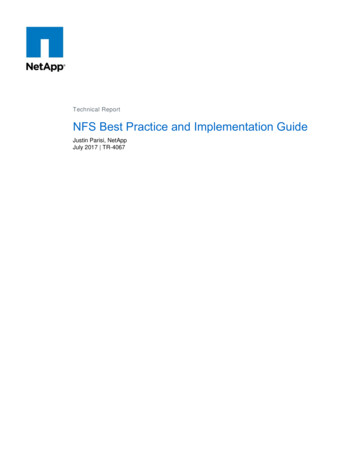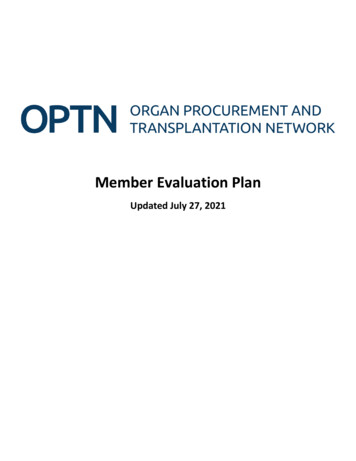
Transcription
Member Evaluation PlanUpdated July 27, 2021
Table of ContentsOPTN Member Evaluation Plan Introduction . 5Policy 2.2: OPO Responsibilities . 6Policy 2.3: Evaluating and Screening Potential Deceased Donors . 6Policy 2.4: Deceased Donor Medical and Behavioral History . 7Policy 2.5: Hemodilution Assessment . 7Policy 2.6: Deceased Donor Blood Type Determination and Reporting . 8Policy 2.6.B: Deceased Donor Blood Subtype Determination . 8Policy 2.8: Required Deceased Donor General Risk Assessment . 9Policy 2.9: Required Deceased Donor Infectious Disease Testing . 9Policy 2.11.B: Required Information for Deceased Liver Donors . 10Policy 2.11.C: Required Information for Deceased Heart Donors . 10Policy 2.11.D: Required Information for Deceased Lung Donors . 10Policy 2.11.E: Required Information for Deceased Pancreas Donors . 10Policy 2.12: Post Procurement Follow Up and Reporting . 11Policy 2.13: Deceased Donor Management . 11Policy 2.14.B: Pre-Recovery Verification. 11Policy 2.14.C: Organ Procurement Procedures. 12Policy 3.2: Notifying Patients of Their Options . 12Policy 3.3: Candidate Blood Type Determination and Reporting before Waiting List Registration . 13Policy 3.5: Patient Notification . 13Policy 3.6.C: Individual Waiting Time Transfers . 14Policy 3.9: Removing Candidates from the Waiting List . 14Policy 5.3.C: Informed Consent for Kidneys Based on KDPI Greater than 85% . 14Policy 5.7: Organ Check-In . 15Policy 5.8: Pre-Transplant Verification. 15Policy 5.8.B: Pre-Transplant Verification upon Organ Receipt . 16Policy 6.1.A: Adult Heart Status 1 Requirements . 17Policy 6.1.B: Adult Heart Status 2 Requirements. 18Policy 6.1.C: Adult Heart Status 3 Requirements. 18Policy 6.1.D: Adult Heart Status 4 Requirements . 19Policy 6.2.A: Pediatric Heart Status 1A Requirements. 20Policy 6.3: Status Updates. 20Policy 6.4: Adult and Pediatric Status Exceptions . 20Policy 8.4.A: Waiting Time for Candidates Registered at Age 18 Years or Older . 21Page 2 of 64
Policy 8.4.B: Waiting Time for Candidates Registered prior to Age 18. 21Policy 8.5.A: Candidate Classifications . 22Policy 8.5.D: Allocation of Kidneys by Blood Type . 22Policy 8.5.F: Highly Sensitized Candidates . 23Policy 8.5.G Prioritization for Liver Recipients on the Kidney Waiting List. 23Policy 9.1.A: Adult Status 1A Requirements . 24Policy 9.1.B: Pediatric Status 1A Requirements . 24Policy 9.1.C: Pediatric Status 1B Requirements . 24Policy 9.2: Status and Laboratory Values Update Schedule . 25Policy 9.5: Specific Standardized MELD or PELD Score Exceptions. 25Policy 9.9.B Liver-Kidney Candidate Eligibility for Candidates 18 Years or Older . 26Policy 10.1: Priorities and Score Assignments for Lung Candidates . 27Policy 10.1.G: Reporting Additional Data for Candidates with an LAS of 50 or Higher . 27Policy 11.4.B: Kidney-Pancreas Waiting Time Criteria for Candidates At Least 18 Years Old . 28Policy 13.4.A: Release of Protected Health Information (PHI) . 29Policy 13.4.C: Additional Requirements for KPD Donors . 29Policy 14.1.A: Living Donor Psychosocial Evaluation Requirements. 30Policy 14.2.A: ILDA Requirements for Living Donor Recovery Hospitals . 31Policy 14.2.B: ILDA Protocols for Living Donor Recovery Hospitals . 31Policy 14.3: Informed Consent Requirements . 32Policy 14.4.A: Living Donor Medical Evaluation Requirements . 35Policy 14.4.B: Additional Requirements for the Medical Evaluation of Living Kidney Donors . 37Policy 14.4.C: Additional Requirements for the Medical Evaluation of Living Liver Donors . 38Policy 14.5: Living Donor Blood Type Determination and Reporting . 39Policy 14.5.A: Living Donor Blood Type Determination . 40Policy 14.5.B: Living Donor Blood Subtype Determination. 40Policy 14.5.C: Reporting of Living Donor Blood Type and Subtype . 40Policy 14.7: Living Donor Pre-Recovery Verification. 41Policy 14.8.B: Living Donor Specimen Collection and Storage . 42Policy 15.2: Candidate Pre-Transplant Infectious Disease Reporting and Testing Requirements . 42Policy 15.3.B: Donors with Risk Identified Pre-Transplant . 43Policy 15.3.C: Required Post-Transplant Infectious Disease Testing . 43Policy 15.4.A: Host OPO Requirements for Reporting Post-Procurement Donor Results and Discovery of Potential DiseaseTransmissions . 44Policy 16.5: Verification of Information before Shipping . 44Page 3 of 64
Policy 16.6.A: Extra Vessels Use and Sharing . 44Policy 16.6.B: Extra Vessels Storage. 45Policy 16.6.C: Reporting Requirements for Extra Vessels . 45Policy 18.1: Data Submission Requirements. 46Policy 18.5.A: Reporting Requirements after Living Kidney Donation . 47Policy 18.5.B: Reporting Requirements after Living Liver Donation . 48Bylaws Appendix B.1: OPO Compliance . 49Bylaws Appendix B.2: OPO Performance Requirements . 49Bylaws Appendix B.3: Quality Assessment and Performance Improvement (QAPI) Requirement . 50Bylaws Appendix B.5: OPO Personnel. 50Bylaws Appendix C.1: Histocompatibility Laboratory Compliance . 51Bylaws Appendix C.5: Changes in Key Laboratory Personnel . 51Bylaws Appendix D.1: Transplant Hospital Compliance . 52Bylaws Appendix D.4: Quality Assessment and Performance Improvement (QAPI) Requirement. 53Bylaws Appendix D.7: Transplant Program Key Personnel . 53Bylaws Appendix D.7.B: Surgeon and Physician Coverage (Program Coverage Plan) . 54Bylaws Appendix D.8: Changes in Key Transplant Program Personnel . 55Bylaws Appendix D.8.D: Reinstatement of Previously Designated Primary Surgeon or Primary Physician . 56Bylaws Appendix D.11: Review of Transplant Program Functional Activity . 56Bylaws Appendix D.12.A: Transplant Program Performance . 57Bylaws Appendix D.12.B: Patient Notification Requirements for Waiting List Inactivation . 58Bylaws Appendix F.7.E: Conditional Program Approval Status. 59Bylaws Appendix K.1.A: Program Component Cessation . 60Bylaws Appendix K.3.A: Notice to the OPTN Contractor of Long-term Inactive Status. 60Bylaws Appendix K.3.B: Notice to the Patients of Long-term Inactive Status . 61Bylaws Appendix K.4.A: Notice to the OPTN Contractor . 62Bylaws Appendix K.4.B: Notice to the Patients. 62Bylaws Appendix K.5: Transition Plan during Long-term Inactivity, Termination, or Withdrawal . 63Bylaws Appendix K.6: Transferred Candidates Waiting Time . 64Page 4 of 64
OPTN Member Evaluation Plan IntroductionOPTN members agree to comply with OPTN obligations, which are set forth in the National Organ Transplant Act, asamended, 42 U.S.C. 273 et seq., the OPTN Final Rule, 42 CFR Part 121, OPTN bylaws, and OPTN policies. The OPTNMember Evaluation Plan is provided as guidance for members on how UNOS, as the OPTN contractor, conducts itsroutine reviews and evaluations of members for performance and compliance with OPTN obligations.Members are expected to comply with all obligations, regardless of whether an obligation is specifically described in theOPTN Member Evaluation Plan as one that is “routinely” monitored. Reports of non-compliance with any OPTNobligation will be investigated by UNOS.Routine review and evaluation activities performed by UNOS include:1. Reviewing applications submitted for OPTN membership and designation as an organ-specific transplantprogram or living donor recovery hospital2. Reviewing applications for mandatory key personnel for maintenance of organ-specific transplant program orliving donor recovery hospital designation3. Monitoring member actions associated with transplant program inactivation or re-activation, and requests forwithdrawal from the OPTN4. Monitoring member transplant program and OPO performance-related data including graft and patient survivalrates, transplant rates, and organ yield5. On-site surveys of individual member compliance with OPTN obligations6. Reviewing all deceased donor match runs that result in a transplanted organ to ensure that allocation wascarried out according to OPTN policy, and investigating potential policy violations, including when:a. An organ is accepted for one candidate, but another candidate is transplantedb. Candidates on a match run are skipped or bypassed in order to allocate the organ to a candidate furtherdown the match runc. An organ is transplanted into an individual who did not appear on the match rund. An organ is exported to a foreign country prior to exhausting the match run7. Investigating issues reported to UNOS or discovered during routine reviews of OPTN members, including:a. Potential patient safety eventsb. Potential donor-derived disease transmission eventsc. Living donor eventsd. Vessels recovered from a living donor or a donor positive for hepatitis B or hepatitis C that were transplantedinto someone other than the recipient of that donor’s organe. Complaintsf. Reports or allegations of potential member noncompliance with OPTN obligationsFor more information on OPTN member requirements and obligations, see: National Organ Transplant Act, as amended, 42 U.S.C. 273 et seq. OPTN Final Rule, 42 CFR Part 121 Article I: Membership of the OPTN bylaws Appendix D of the OPTN bylaws Appendix L of the OPTN bylawsPage 5 of 64
Policy 2.2: OPO ResponsibilitiesEffective Date: 3/1/2021At OPOs, site surveyors will:Review a sample of deceased donor records for the following documentation: An authorization to donate Reasons for excluding any donors from the eligible death definition Declaration of death note, includingo Date and time of pronouncement of deatho Signature(s) of the person(s) required under the relevant state's laws Blood specimen collection and storage noted in the donor chart, including a collection date that is no earlierthan 1 day before the donor recovery dateReview a sample of deceased donors in UNet to verify that the following source documents were uploaded to UNet : ABO typing ABO subtyping (if applicable) Results for infectious disease tests that are required by Policy 2.9: Required Deceased Donor Infectious DiseaseTesting Death pronouncement Authorization for donation HLA typingReview a sample of deceased donor records to verify that data reported through UNet is consistent with sourcedocumentation, including: Infectious disease test resultsOPOs will provide:The requested sample of deceased donor medical recordsPolicy 2.3: Evaluating and Screening Potential Deceased DonorsEffective Date: 2/1/2014At OPOs, site surveyors will:Review a sample of deceased donor records for the following documentation: That the OPO attempted to obtain the donor's medical and behavioral historyOPOs will provide:The requested sample of deceased donor medical recordsPage 6 of 64
Policy 2.4: Deceased Donor Medical and Behavioral HistoryEffective Date: 3/1/2021At OPOs, site surveyors will:Review a sample of deceased donor records for the following documentation: The donor was assessed for the risk of acute HIV, hepatitis B (HBV), or hepatitis C (HCV) infection according tothe criteria in the U.S. Public Health Service (PHS) Guideline Whether or not the OPO’s assessment of the donor according to the U.S. PHS Guideline identified any riskcriteria for acute HIV, HBV, or HCV infectiono If the OPO identified any risk criteria for HIV, HBV, or HCV infection in the donor, that the OPOcommunicated this information to all receiving transplant programs Any evidence in the medical and behavioral history that the donor was exposed to or received HPDGHo If the donor was exposed to or received HPDGH, that this was communicated to the receiving transplantprogramsOPOs will provide:The requested sample of deceased donor medical recordsPolicy 2.5: Hemodilution AssessmentEffective Date: 3/1/2021At OPOs, site surveyors will:Review a sample of deceased donor records for the following documentation: The calculations used to assess hemodilution The date and time of the blood draw for the blood used for the screening tests The date and time of the blood draw used to determine hemodilution If the donor samples are hemodiluted, that the following were communicated to the accepting transplantprograms:o Any screening results from the hemodiluted specimenso The tests completed on the hemodiluted specimenso The hemodilution calculation used for the hemodiluted specimens, if requestedOPOs will provide:The requested sample of deceased donor medical recordsPage 7 of 64
Policy 2.6: Deceased Donor Blood Type Determination and ReportingEffective Date: 9/1/2020At OPOs, site surveyors will:Review the OPO’s internal policies, procedures, and protocols to verify that it has a written protocol(s) that includes: Determining blood type by testing at least two separate blood samples with different collection times A process for resolving conflicting or indeterminate primary blood types A definition of the qualified health care professionals who can participate in blood type verification andreporting That blood type verification and reporting occurs prior to the match run That the two individuals performing blood type reporting each consult source documents from all knownavailable blood type testsInterview OPO staff to verify that OPO staff practices align with OPTN policy and with the OPO’s policies and proceduresfor blood type determination and reporting.OPOs will provide:The OPO's internal policies, procedures and protocols for the management of deceased donorsAccess to relevant staff who can answer interview questionsAdditional Guidance:A hospital's electronic medical record (EMR) can be a source document for lab results when the performing lab's resultsare directly uploaded into the EMR.Policy 2.6.B: Deceased Donor Blood Subtype DeterminationEffective Date: 9/1/2020At OPOs, site surveyors will:Review the OPO's internal policies, procedures, and protocols to verify that it has a written protocol(s) that includes: Determining blood subtype by testing at least two separate blood samples with different collection times Only using pre-red blood cell transfusion samples for subtyping Not reporting subtype when there are conflicting or indeterminate subtyping resultsInterview OPO staff to verify that OPO staff practices align with OPTN policy and with the OPO’s policies and proceduresfor blood subtype determination and reporting.Review a sample of deceased donor records when subtype is reported, to verify that: Subtyping tests were completed on at least two separate blood samples Only pre-red blood cell transfusion samples were used for subtyping All samples used for the subtyping tests have different draw times All subtyping tests have identical resultsOPOs will provide:The requested sample of deceased donor medical recordsThe OPO's internal policies, procedures and protocols for the management of deceased donorsAccess to relevant staff who can answer interview questionsPage 8 of 64
Policy 2.8: Required Deceased Donor General Risk AssessmentEffective Date: 9/1/2014At OPOs, site surveyors will:Review a sample of deceased donor records for documentation that there are results or other evidence that thefollowing were performed: Urinalysis within 24 hours before cross clampOPOs will provide:The requested sample of deceased donor medical recordsPolicy 2.9: Required Deceased Donor Infectious Disease TestingEffective Date: 5/27/2021At OPOs, site surveyors will:Review a sample of deceased donor records for documentation of results or other evidence that the following wereperformed and that results reported through UNet are consistent with source documentation: Blood and urine cultures HIV, HBV, and HCV testing using samples drawn no earlier than 4 days before the donor recovery date:o HIV antibody (anti-HIV) donor screening test or HIV antigen/antibody (Ag/Ab) combination testo HIV ribonucleic acid (RNA) screening or diagnostic nucleic acid test (NAT)o Hepatitis B surface antigen (HBsAg) screening testo Hepatitis B core antibody (total anti-HBc) screening testo Hepatitis B deoxyribonucleic acid (DNA) screening or diagnostic NATo Hepatitis C antibody screening test (anti-HCV)o Hepatitis C RNA screening or diagnostic NAT Cytomegalovirus (CMV) antibody (anti-CMV) screening or diagnostic test Epstein-Barr Virus (EBV) antibody (anti-EBV) screening or diagnostic test Syphilis screening or diagnostic test Toxoplasma Immunoglobulin (IgG) antibody testReview deceased lung donor testing data reported in UNet to verify that all deceased lung donors were tested forSARS-CoV-2 by NAT performed on a lower respiratory specimen.OPOs will provide:The requested sample of deceased donor medical recordsAdditional Resources:FDA-approved screening and diagnostic tests: http://tinyurl.com/FDA-SCREENINGPage 9 of 64
Policy 2.11.B: Required Information for Deceased Liver DonorsEffective Date: 9/1/2014At OPOs, site surveyors will:Review a sample of deceased liver donor records for documentation of: Results or other evidence that direct bilirubin was performed Results or other evidence that total bilirubin was performedOPOs will provide:The requested sample of deceased donor medical recordsPolicy 2.11.C: Required Information for Deceased Heart DonorsEffective Date: 3/1/2018At OPOs, site surveyors will:Review a sample of deceased heart donor records for documentation of: Results or other evidence that an echocardiogram was performedOPOs will provide:The requested sample of deceased donor medical recordsPolicy 2.11.D: Required Information for Deceased Lung DonorsEffective Date: 9/1/2014At OPOs, site surveyors will:Review a sample of deceased lung donor records for documentation of: A sputum gram stainOPOs will provide:The requested sample of deceased donor medical recordsPolicy 2.11.E: Required Information for Deceased Pancreas DonorsEffective Date: 9/29/2016At OPOs, site surveyors will:Review a sample of deceased pancreas donor records for documentation of: Serum amylase Serum lipaseOPOs will provide:The requested sample of deceased donor medical recordsPage 10 of 64
Policy 2.12: Post Procurement Follow Up and ReportingEffective Date: 3/1/2018At OPOs, site surveyors will:Review the OPO’s internal policies, procedures, and protocols to verify that it has a written protocol(s) for: Obtaining deceased donor test results and reporting them to the OPTN Contractor Reporting positive test results and relevant information to receiving transplant programs and, when required, tothe OPTN Improving Patient Safety PortalInterview OPO staff to verify that OPO staff practices align with OPTN policy and with the OPO’s policies and proceduresfor post-procurement follow-up and reporting of deceased donor test results.OPOs will provide:The OPO’s internal policies, procedures, and protocols for the management of deceased donorsAccess to relevant staff who can answer interview questionsPolicy 2.13: Deceased Donor ManagementEffective Date: 3/1/2018At OPOs, site surveyors will:Review a sample of deceased donor records for the following documentation: Fluid intake and output were monitored by the OPOOPOs will provide:The requested sample of deceased donor medical recordsPolicy 2.14.B: Pre-Recovery VerificationEffective Date: 3/1/2018At OPOs, site surveyors will:Review a sample of deceased donor records for the following documentation: A verification for each organ containing:o Donor IDo Organo Organ laterality (if applicable)o Donor blood typeReview the OPO's internal policies, procedures, and protocols to verify that it has a written protocol(s) that includes: Definition of qualified healthcare professionals to perform the pre-recovery verification Verification of the following by the on-site recovering surgeon and a qualified health care professional:o Donor IDo Organo Organ laterality (if applicable)o Donor blood typeo Donor blood subtype (if used for allocation)Page 11 of 64
Verification of the following by two qualified health care professionals when the intended recipient is knownprior to recovery:o Intended recipient unique identifiero Intended recipient blood typeo Donor and intended recipient are blood type compatible or intended incompatibleSources used for verificationInterview OPO staff to verify that OPO staff practices align with OPTN policy and with the OPO’s policies and proceduresfor pre-recovery verifications.OPOs will provide:The requested sample of deceased donor medical recordsThe OPO's internal policies, procedures and protocols for the management of deceased donorsAccess to relevant staff who can answer interview questionsPolicy 2.14.C: Organ Procurement ProceduresEffective Date: 3/1/2018At OPOs, site surveyors will:Review a sample of deceased donor records for the following documentation: All flush solutions and additives All flush solution and additive lot numbersOPOs will provide:The requested sample of deceased donor medical recordsPolicy 3.2: Notifying Patients of Their OptionsEffective Date: 2/1/2014At transplant hospitals, site surveyors will:Review a sample of medical records, and
The donor was assessed for the risk of acute HIV, hepatitis B (HBV), or hepatitis C (HCV) infection according to the criteria in the U.S. Public Health Service (PHS) Guideline
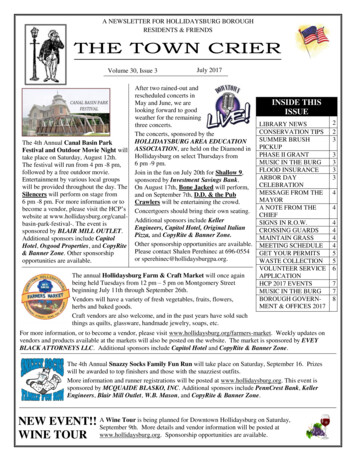


![OPTN Policies Effective as of April 28 2022 [9.9A]](/img/32/optn-policies.jpg)

